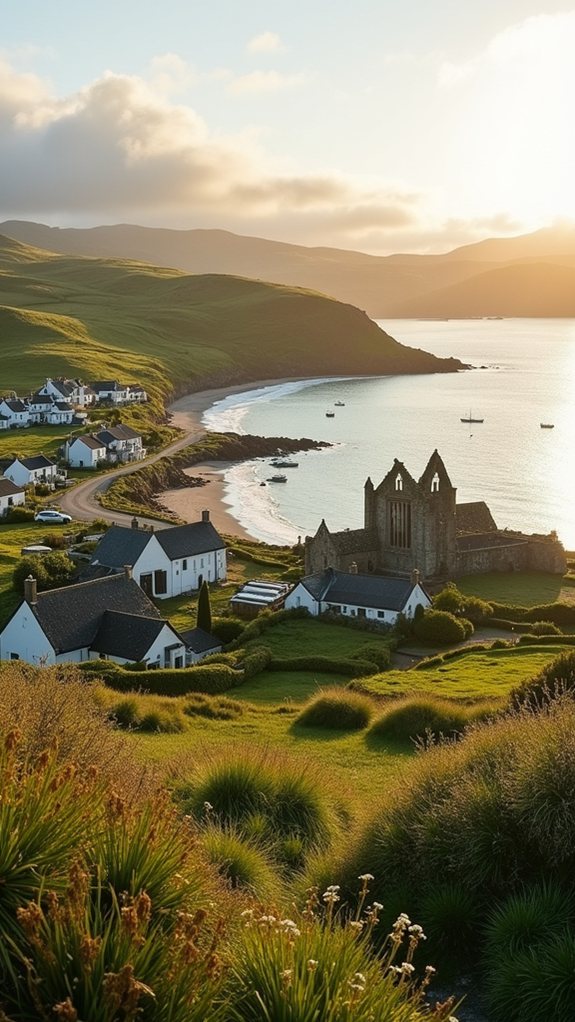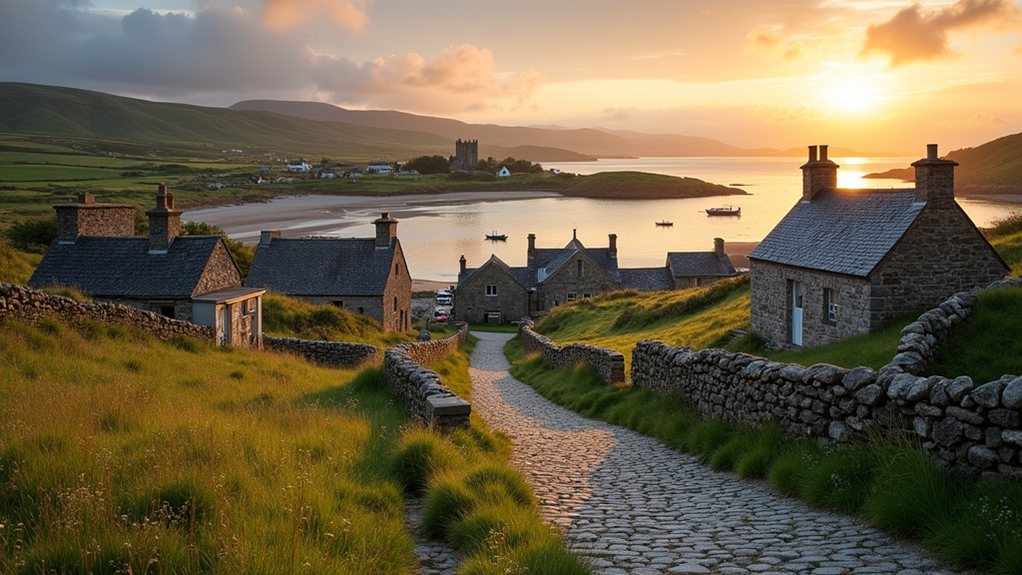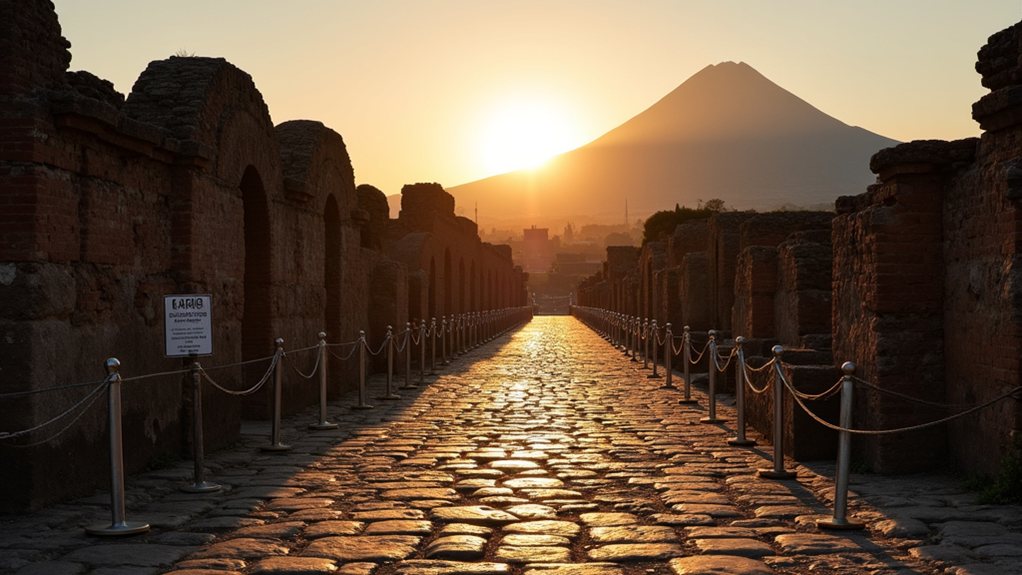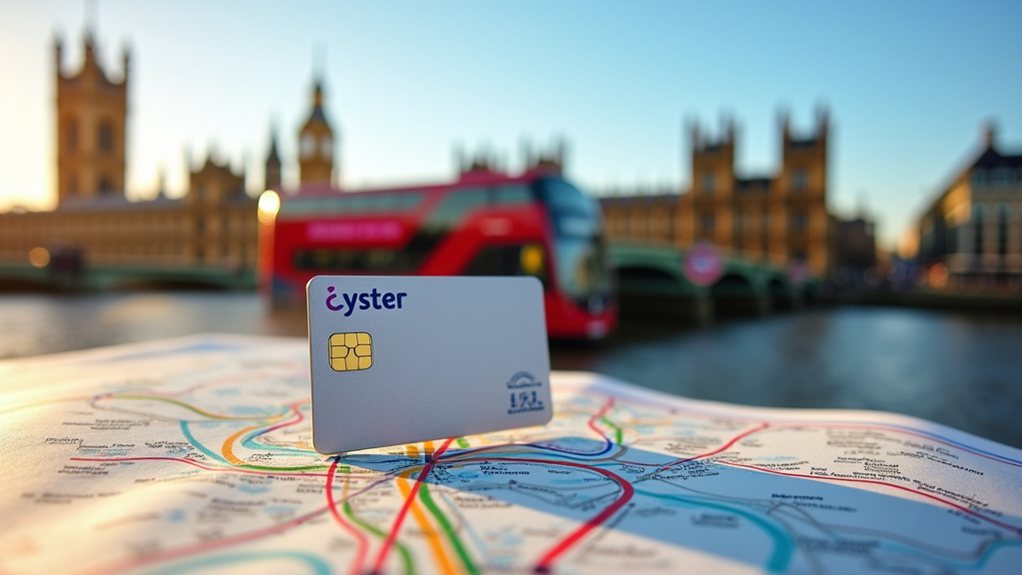Like a whispered secret among the misty Hebridean waters, Baile Mor sits peacefully on Scotland’s holy Isle of Iona, its tranquility fiercely guarded by locals who’d rather keep its white sand beaches and ancient abbey to themselves. You won’t find cars disturbing the serene soundscape here, just the rhythmic lapping of waves against the shore and the occasional bleating of sheep. The town’s artisan workshops and historical treasures await those willing to brave the ferry crossing—but should you share its existence with others?
A Timeless Haven on Scotland’s Sacred Isle

Situated on the serene Isle of Iona, a small gem in Scotland’s Inner Hebrides, Baile Mor stands as perhaps the nation’s most tranquil settlement. This peaceful village, overlooking the Sound of Iona, exists on an island measuring just 1.5 miles wide and three miles long, creating an intimate atmosphere that locals cherish and protect from the hustle of modern life.
In this timeless Scottish haven, tranquility isn’t just a feeling—it’s Baile Mor’s very essence, carefully guarded by its inhabitants.
Visitors must arrive by foot ferry from Fionnphort on the Isle of Mull, as vehicles are generally not permitted—a restriction that preserves both the island’s delicate environment and its contemplative character.
Baile Mor’s history runs as deep as the turquoise waters surrounding it. The island gained prominence in 563 AD when St. Columba established what would become the birthplace of Celtic Christianity in Scotland.
The village sits in the shadow of Iona Abbey, whose 13th-century remains and 15th-century Celtic cross stand as proof of a spiritual legacy that withstood multiple Viking raids. Thomas Telford’s 1828 Parish Church adds architectural significance to this historical tapestry. The MacLeans Cross, dating from the 15th century, is one of the settlement’s most treasured historical artifacts.
Though the island’s population hovers around just 120 people—down from about 350 in the 18th century—Baile Mor welcomes over A100,000 visitors annually. These travelers come to experience the island’s stunning white sand beaches, unique machair grasslands teeming with wildflowers, and the emerald waters that lap against its shores.
Local establishments like St. Columba Hotel and The Argyll Hotel offer cuisine featuring ingredients sourced directly from the island and surrounding seas.
The village economy centers around tourism and traditional craftsmanship. Shops like Aosdàna and Iona Craft Shop showcase handmade Celtic jewelry and textiles, continuing artisanal traditions that have defined the community for generations.
Historically, the island was known for its Iona Marble, quarried and exported worldwide.
Baile Mor epitomizes the delicate balance between preservation and accessibility. Despite being considered modest by locals, the village houses centuries of history within its streets and buildings, offering visitors an authentic Scottish experience away from typical tourist routes. Its unpredictable weather, flat landscapes, and rich historical sites create an atmosphere where time seems to move differently—slower, more deliberately—allowing visitors to experience a quietude that’s increasingly rare in our modern world.
The village serves as the island’s only settlement, offering panoramic views of other islands including Tiree, Coll, and Rum from its highest point on clear days. In contrast to mainland attractions like Scotland’s limestone caves, Baile Mor offers a more intimate connection with nature through its pristine shores and protected landscapes.







